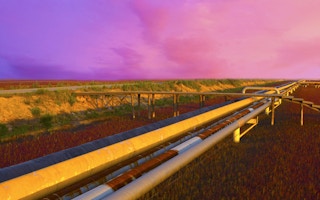Billions of dollars are being invested in the liquified natural gas (LNG) industry but these assets risk being stranded if they are not being built in alignment with net zero goals, say experts.
If energy companies are committed to achieving net zero by 2050, they have to ensure their gas assets are also able to meet the emissions targets, said Matthew Wittenstein, chief of section energy connectivity at the UN Economic and Social Commission for Asia and the Pacific (UN ESCAP).
“If that is not part of the investment plan when you’re building a terminal, then you have the real potential for stranded assets,” he said in an energy transition panel discussion at The Economist Impact’s Sustainability Week Asia.
Oil and gas operators, however, are still building LNG assets with much longer expected lifespans, said fellow panellist Luke Holt, waste to energy lead at Danish architecture and engineering consultancy Ramboll.
“A lot of these oil and gas operators are building assets with [lifespans] of 50 years. There’s a disparity somewhere in the market there, where their analysts are predicting something different to sustainability analysts,” he said.
According to the International Energy Agency’s (IEA) roadmap on achieving net zero by 2050, no new oil and gas fields should be approved for development from 2021 onwards. In addition, the future supply of oil and gas would be increasingly concentrated among a small number of low-cost producers, the report said.
“If we refer to the IEA’s net-zero technical pathway, it is clear that the amount of LNG that needs to be still in play by 2050 is actually really low,” said Xinying Tok, head of Southeast Asia for Carbon Trust, a climate advisory firm.
Faced with pressure to ensure their portfolios are green, investors are likely to question the financial viability of LNG assets, said Tok. “The very short time frame that [LNG plants] can continue to run for is a key question to think about,” she said.
Investments in LNG are expected to accelerate and peak at US$42 billion globally in 2024, but then “fall off a cliff” as policymakers transition away from fossil fuels, according to a 2022 report by independent energy consultancy Rystad.
“New LNG projects are driven mainly by a short-term increase in natural gas demand in Europe and Asia due to Russia’s war in Ukraine and ensuing sanctions and restrictions placed on Russian gas exports,” said Rystad.
One clean energy benefit to the expansion of LNG infrastructure, however, is that exisitng pipelines and distribution networks can be repurposed to distribute hydrogen, said Holt.
“Building that infrastructure is stepping us in the right direction,” he added.
In countries including the United States, United Kingdom, France, Germany, Japan and Switzerland, mixing up to 20 per cent of hydrogen to fossil gas streams has proven to be possible without affecting the pipelines, data from the US National Renewable Energy Laboratory showed. While adapting existing natural gas pipelines to carry pure hydrogen is a relatively new process, only components such as pumps, compressors, measuring units and controls may need to be replaced, according to the German National Hydrogen Council.
It is important that investors and companies alike keep in mind that LNG is a transition fuel, speakers on The Economist Impact’s panel agreed.
“It is one thing to say, I’m going to buy more today because I need more today. It’s another to say I’m going to build more LNG terminals or gasification plants because I’m going to use it in the future,” said Wittenstein. “It needs to be net zero in 30 or 40 years, whatever the national targets are, or it is not going to work.”
“We cannot be kicking the can down the road where strandedness and asset devaluation keeps becoming the norm in the future,” said Tok.

















